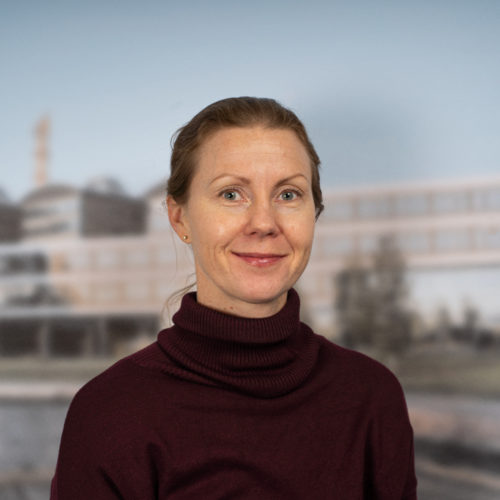
Charlotte Romare
Senior lecturer
Department of Health, Room H560E
Short description of my research project
I am a critical care nurse specialised in intensive care and I have a PhD in Applied Health Technology. My emplyment is as lecturer. I teach in courses belonging to the medical team, and I am a supervisor for degree projects in nursing.
Background
Complex care environments
Many of us will some time in our lives get in contact with anesthesia care, or intensive care, as patient or relative. At the anesthesia department (AD) patients are sedated for examinations, treatments or surgeries. The sedative drugs provided cause changes in vital organ functions, and those functions are maintained and carefully monitored by specialised health care professionals (HCPs). To the intensive care unit (ICU) the most critically ill patients are admitted, patients with failure in one or more vital organ systems. Increased medical skills, and technology development, has made it possible to treat patients with increasingly complex medical situations, both acute and elective. Patients that needs anesthesia for surgery or treatment, or patients admitted to intensive care, are extra vulnerable and exposed due to their condition. Anesthesiology care and intensive are conducted in high tech, and complex care environments. Care in those environments are characterized by rapid changes in patients’ conditions, and the demand to make fast and correct decisions in life threatening situations are ever present for HCPs. Patient vital signs (VS) are important factors used by HCPs during decision making, and can give early indication about upcoming events that might be prevented. The world Health Organisation (WHO) states that delivering safe care in complex care environments is a great challenge. Daily efforts to provide safe and high quality care are being made, and technology development is part of this process .
Smart glasses
Smart glasses (SG) are worn like regular glasses, and data can be presented in the user’s field of view through a prism. SG can connect to WiFi and Bluetooth and display, for example, webpages or pictures. Through the integrated camera, pictures and video can be captured. SG can be used to communicate by voice and/or video. To control SG, the user can use voice- or touch commands, or physical input such as eyeblink. Research has concluded that SG are suitable if timely access to information, mobility, continuous attention, and hands-free interaction is needed. SG works, just like tablets and smartphones, through applications that need to be customized to the current setting and purpose.
Smart glasses in complex care environments
SG has been suggested to improve patient care, and patient safety, in other health care settings. Our scoping review reveals that research about clinical use of SG in complex care environments is sparse. There are mainly research about isolated events occurring in those environments, or from simulated settings.
Through a needs analysis in ICU setting during first quarter of 2015, HCPs highlighted several areas that could be improved to increase quality of care. SG was suggested by technology companies as a possible solution, and an innovation project called SUCCCE (www.succce.se) was established. During 2017 the project was extended to also include the similar context of anesthesia care. Software engineers have developed an application for monitoring VS by SG using, among other things, information from two of our studies to meet the needs identified during the needs analysis.
Overall aim
The overall aim of this research project is to investigate if, and if so how, SG can be part of providing safe care for patients in complex care environments.
5 studys will be conducted to answer the overall aim.
This project is approved by the ethics committee in Lund.
Main supervisor: Lisa Skär, professor BTH
Assistant supervisors: Peter Anderberg BTH and Johan Sanmartin Berglund BTH
Projects & Publications
| Finished projects |
|---|
| PhD-project about smart glasses in complex care environemnts |